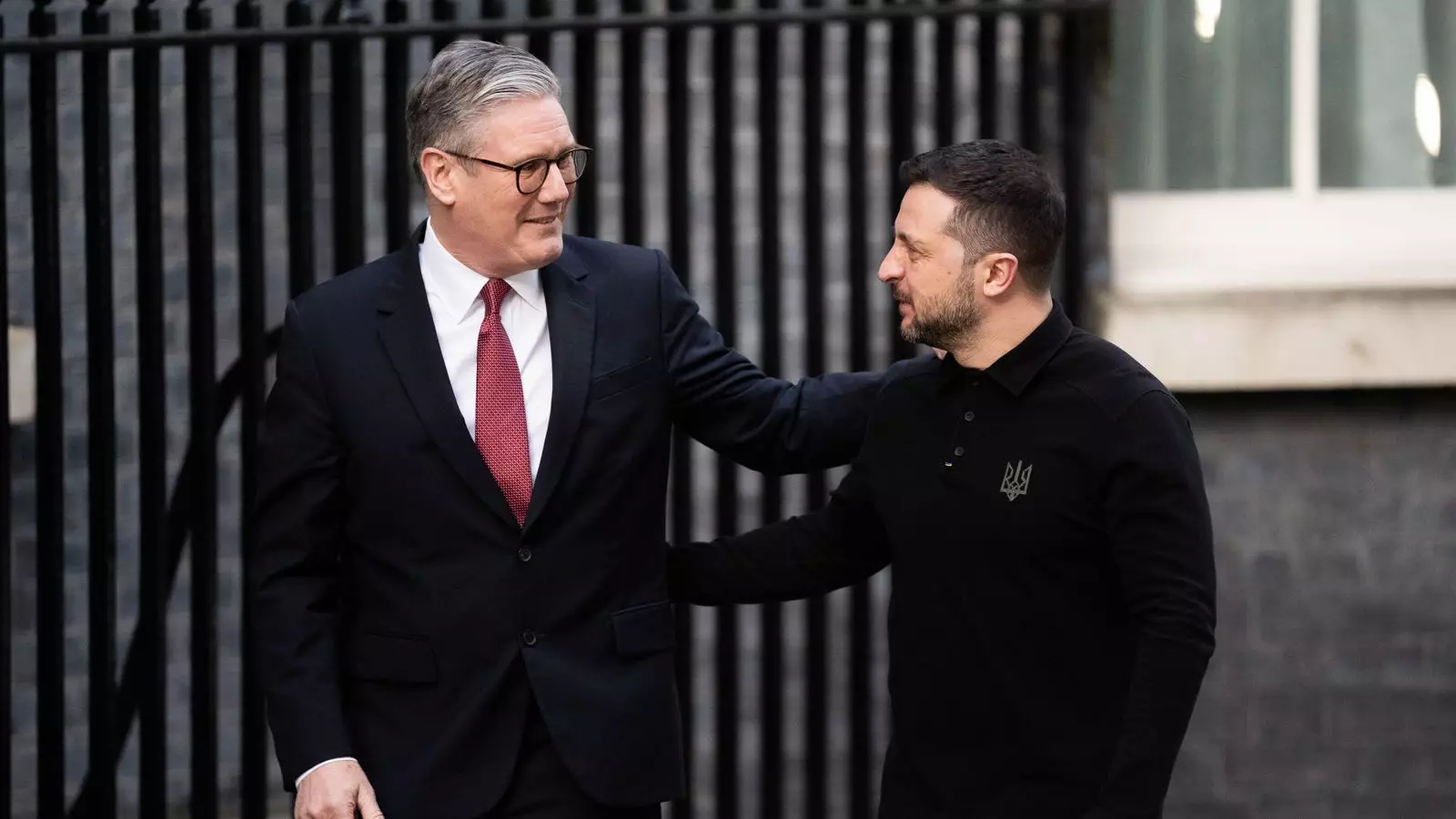The geopolitical landscape surrounding the Ukraine-Russia conflict has entered a precarious phase, catalyzing renewed urgency for diplomatic engagements among Western powers. Recent developments, notably a controversial exchange between U.S. President Donald Trump and Ukrainian President Volodymyr Zelenskyy during a visit to the White House, have further complicated an already tumultuous situation. U.K. Prime Minister Sir Keir Starmer has stepped into the fray, advocating for a collaborative ceasefire effort alongside France and Ukraine, with the goal of formulating a singular peace plan to present to the United States. This article dissects the intricacies of these dynamics, recognizing both the obstacles and the pathways toward achieving a sustainable resolution.
Leadership in Crisis: Starmer’s Active Role
Sir Keir Starmer’s decision to engage directly with both Trump and Zelenskyy underscores his recognition of the urgent necessity for dialogue amid rising tensions. His strong belief in Trump’s desire for a “lasting peace” reflects an effort to harness diplomatic channels rather than abandon them. This reveals a nuanced approach to foreign relations wherein the U.K. can serve as a facilitator rather than a bystander. By reaching out directly to both leaders post-clash, Starmer demonstrates a hands-on strategy, emphasizing the importance of maintaining open lines of communication.
However, the Prime Minister’s optimism towards Trump raises questions regarding the reliability of the U.S. administration’s commitment to Ukraine. While Starmer claims to “trust” Trump’s motivations based on prior discussions, critics may argue that such trust is misplaced, particularly given the volatility of Trump’s rhetoric and the emerging skepticism regarding American engagement in European security issues.
Starmer’s statements about Europe existing in a “moment of real fragility” resonate deeply in light of heightened insecurity. The collective anxiety around Russia’s intentions has fostered a climate of distrust, particularly toward Vladimir Putin, whom Starmer unequivocally states he does not trust. The Premier’s call for robust security guarantees reflects a growing consensus among leaders that the current stability in Europe is illusionary at best. The underlying question remains: how can Europe maintain a united front against Russian aggression while navigating the complex motivations of its allies?
Simultaneously, there is the added pressure for European nations to prevent America from disengaging from the conflict. Conservative leader Kemi Badenoch’s remarks illustrate a prevailing sentiment that the U.K. and its European counterparts must proactively ensure continued U.S. involvement. The idea that “if we all get dragged into an escalation, America will get dragged into it eventually” reinforces the entangled nature of these geopolitical relationships, indicating that peace in the region is inextricably linked to maintaining U.S. military and diplomatic presence.
In light of these developments, the collaborative decision among the U.K., France, and Ukraine to draft a ceasefire plan signifies a determined step forward. Starmer emphasizes the need for a “strong Ukraine” that retains its ability to defend itself, suggesting that negotiations must be rooted not only in immediate cessation of hostilities but also in creating conditions that bolster Ukrainian strength. The emphasis on a “European element to security guarantees” calls into question the balance of power and responsibilities within NATO and the broader European Union.
The accompanying proposal for a “U.S. backstop” reflects a strategy not solely focused on conflict resolution but also on fortifying Ukraine’s long-term position. It signals a desire to construct a multifaceted approach encompassing military, diplomatic, and economic dimensions. While the path is fraught with uncertainty, this tripartite framework could serve as a blueprint for stability, fostering a balance of power that may deter further aggression.
The Question of Trust and Leadership
The fundamental challenge lies in the question of leadership and trust, especially in the context of repeatedly proven aggressiveness from Putin. The longstanding patterns of his militaristic endeavors posit a continual threat to not only Ukraine but to European sovereignty as a whole. Starmer’s pessimism toward his reliability highlights a harsh reality—diplomacy is often underpinned by mistrust and competing ambitions.
As Germany’s Liberal Democrat leader Sir Ed Davey echoes sentiments of potential troop deployment as peacekeepers contingent on a “credible” deal, the stakes become higher. If established, such military involvement could signify a turning point in NATO’s posture towards Russia, amplifying the need for genuine dialogues between conflicting parties.
The road to a sustainable peace in Ukraine requires an intricate balance of trust-building, decisive leadership, and an unwavering commitment to diplomacy—even amid calamity. Through collaborative efforts from the U.K., France, and other allies, there lies potential for innovative solutions to emerge from the chaos. However, this requires a profound re-examination of how nations perceive one another’s intentions and ambitions on the global stage. As the conflict continues, the world holds its breath, hopeful for a resolution that can transcend mere cease-fires, setting the groundwork for a more stable and peaceful future in Europe.

